
Although I have driven through it on a number of occasions, I hadn’t been to Conwy since I was seventeen. Thankfully, any pictures I might have of that trip, are long since lost, or the scanner won’t work, or something… but I do have fond memories of my very encounter with Wales. We had camped our way around the country and liked Conwy enough to spend two nights there. My clearest memory of the place is of the castle and a sunset over the sea and my attempts to capture it on camera. My love affair with the lens started early.

We hadn’t come for memories, though, we reluctantly decided that we needed hats. The sun, even at that early hour, was becoming unbearably hot and both of us, unprepared for such un-British heat, had already caught too much sun. The town duly provided my style-conscious friend, whose hats are legendary, with a sensible sun-hat. For me, who never wears a hat except to weddings, it produced a huge, floppy straw affair that might have been in fashion on my first visit, all those years ago… and might well be wide enough for a small family to camp in its shade.

Everywhere we went the town displays its history. You cannot miss the castle, the first Welsh castle I visited all those years ago. Not only is it huge, but the most of the old town sits within its outer walls. The castle and the town walls were built for the English King Edward I between 1283 and 1289 during his conquest of the Welsh principality. One part of the wall incorporates a an even older tower that was once part of Llewellyn the Great’s court.
 We wandered around to the old church, the oldest building within the walls of the town, hoping to be able to visit. Building had begun on St Mary’s in 1172 when it was part of the Cistercian Aberconwy Abbey and has, like most of our older churches, grown, changed and evolved with the times and prevailing needs and fashions.
We wandered around to the old church, the oldest building within the walls of the town, hoping to be able to visit. Building had begun on St Mary’s in 1172 when it was part of the Cistercian Aberconwy Abbey and has, like most of our older churches, grown, changed and evolved with the times and prevailing needs and fashions.

Sadly, the church was locked, which was a pity as it has some wonderful stained glass by Edward Burne-Jones and William Morris. Even so, there is a distinct sense of this building still standing at the heart of its community. Beyond the haven of peace contained within the churchyard walls, the life of the town forgets silence.

I try not to get cars and people in my shots of the landscape, but a busy tourist town is not the kind of place where that is likely to happen, not unless you get there before the day begins. At least we were there before the summer season gets fully underway so it was not at all busy. In Conwy, though, it sort of works to have the juxtaposition of ancient and modern. It is a thriving community set against a historic backdrop and has memories of former glories in every corner you look.

Nowhere is this more obvious than as you approach the town from Llandudno, where Thomas Telford’s magnificent suspension bridge crosses the River Conwy. Built in 1826 to replace the ferry across the river, Telford carefully copied the design of the castle’s turrets for the bridge’s supporting towers. Although in modern terms the placing of the bridge leaves much to be desired with regard to the integrity of the castle, its design, at least, shows an unusual degree of sympathy for its era.

Conwy Castle and suspension bridge. Image: CADW
Today the bridge is closed to all but for traffic and the old stones of the castle must breathe a sigh of relief. Aberconwy House, a fifteenth century merchant’s abode, right in the heart of the town, is not so lucky. It sits at the traffic lights and watches the centuries go by. It is one of the oldest houses in Wales whose date is known for certain and I wonder how the household spirits view our world.

Plas Mawr is another merchant’s house in the town, a wonderful Elizabethan building, almost unchanged since the sixteenth century and now fully restored. It is considered to be one of the finest surviving examples of its kind and era… but in spite of our current interest in Elizabethan life, we were not drawn to go in. Not this time at least.

Conwy is one of those towns where you have to keep your eyes open. There are details of architectural artwork in the most unexpected places, from wrought iron grilles through which squirrels chase to moulded goddesses on gables.

It is also a town of contrasts and the most obvious is the contrast between the enormity of the castle and the tiny red house on the quayside, officially declared the smallest house in Great Britain. Built during the 1500s, the house was continuously occupied until 1900. There are just two rooms… downstairs a tiny living room with a coal fire and water supply, upstairs a bedroom. The floor plan measures just ten feet by less than six feet wide, and the ceilings are very low, yet whole families have lived here. It was once just one of several such houses, but was saved from demolition when the others were taken down. The last occupant was a six-foot-three fisherman named Robert Jones, who could not even stand up straight within his home. He lived there until the council declared the place unfit for habitation and the house still belongs to his family.

All around there was the noise of seagulls and the jackdaws that inhabit the old stone of the town walls. They are so much part of the landscape here that people born within those walls are referred to as ‘Jackdaws’ too. But it was not the noise of the birds that drove us back to the car.

We really did not stay long enough to do the town justice. Neither of us are really ‘town’ people by choice, especially when we have been revelling in hills and ancient sites for a few days. Then the noise and bustle, even on a quiet day, seems magnified to uncomfortable levels and the road seems preferable to busy streets. With every intention of being sidetracked somewhere on the way, we finally turned the car towards home and hit the road.








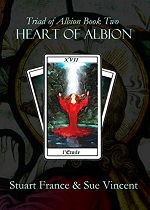






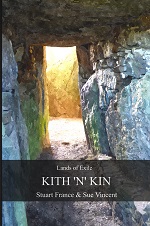


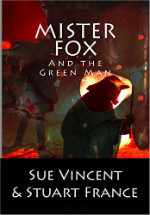



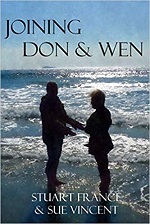

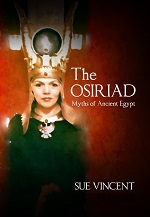










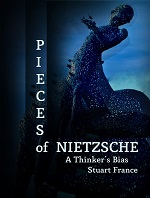
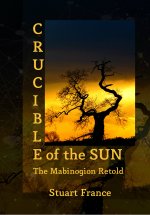


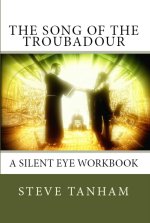


Reblogged this on All About Writing and more.
LikeLike
Thanks, Henrietta.
LikeLike
You are welcome!
LikeLiked by 1 person
Reblogged this on anita dawes and jaye marie.
LikeLiked by 1 person
As pleasant as it looks in your photographs, the presence of so many people would spoil it for me too… I must be getting old and cranky!
LikeLike
I was carefully avoiding the suggestion that we might be too 😉
LikeLiked by 2 people
Never!
LikeLike
😀 x
LikeLiked by 1 person
Reblogged this on Die Erste Eslarner Zeitung – Aus und über Eslarn, sowie die bayerisch-tschechische Region!.
LikeLiked by 1 person
Thanks again, Michael 🙂
LikeLiked by 1 person
OMG, that house! That tiny red house!! At close to 6 feet myself, I’d feel so claustrophobic in there, even all alone, much less with a family! Amazing. As is every other photo, Sue, but the red house was just so unexpected. I never imagined anything like that. I love this tour so much!! Wales is now second on my list of places I long to see one day. (Right behind Scotland). *SIgh*
LikeLike
We’ll be in Scotland in September, Marcia, so expect the odd post or three from that trip too to whet your appetite 😉
LikeLike
Your trip round North Wales has been a great trip down Memory Lane for me Sue. Thanks!
LikeLike
Glad to oblige, Paul 🙂 I loved being there.
LikeLike
I cannot begin to tell you how much I wish i were there. Right now. in fact, I wish I lived there. i could pretend it was a long time ago and make the world go away. Great pictures, too. I kind of like the cars weaving through the narrow roads. It’s part of the charm.
LikeLike
I almost did live there, a long time ago. When I stuck my pin in the map and it brought me here. I wonder how different our lives might have been had we gone west instead of south…
LikeLike
Oh my! I am so impressed with your country. Every time I see these ancient townships I am reminded that the dust in some countries is older than our country. Thank you for sharing your pictures with us.
LikeLike
The only difference is in the traces we leave on the landscape… the earth remain older than time 🙂
LikeLike
lovely post, Sue – I’ve only been past Conwy, so I must add it to my list of places to visit. It looks a lovely place, even with the tourists 😉
LikeLike
It is a really nice little town and the castle is splendid. 🙂
LikeLiked by 1 person
It’s still in private hands, is that right? Either way it does look lovely 🙂
LikeLike
The castle is owned by cadw, I believe, but it really is one of the best fortified towns 🙂
LikeLiked by 1 person